Naltrexone Hydrochloride
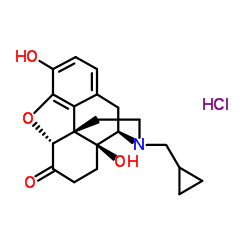
Naltrexone Hydrochloride structure
|
Common Name | Naltrexone Hydrochloride | ||
|---|---|---|---|---|
| CAS Number | 16676-29-2 | Molecular Weight | 377.862 | |
| Density | 1.47 g/cm3 | Boiling Point | 558.1ºC at 760 mmHg | |
| Molecular Formula | C20H24ClNO4 | Melting Point | 274-2760C | |
| MSDS | Chinese USA | Flash Point | 291.4ºC | |
| Symbol |

GHS07 |
Signal Word | Warning | |
| Name | Naltrexone Hydrochloride |
|---|---|
| Synonym | More Synonyms |
| Density | 1.47 g/cm3 |
|---|---|
| Boiling Point | 558.1ºC at 760 mmHg |
| Melting Point | 274-2760C |
| Molecular Formula | C20H24ClNO4 |
| Molecular Weight | 377.862 |
| Flash Point | 291.4ºC |
| Exact Mass | 377.139374 |
| PSA | 70.00000 |
| LogP | 2.26530 |
| Vapour Pressure | 2.71E-13mmHg at 25°C |
| Storage condition | 2-8°C |
| Water Solubility | H2O: 50 mg/mL, clear, colorless |
|
Section 1. Chemical Product and Company Identification Naltrexone Hydrochloride Common Name/ Trade Name Naltrexone Hydrochloride Section 3. Hazards Identification Potential Acute Health Effects Slightly hazardous in case of skin contact (irritant), of eye contact (irritant), of ingestion, of inhalation.
Potential Chronic HealthCARCINOGENIC EFFECTS: Not available. EffectsMUTAGENIC EFFECTS: Not available. TERATOGENIC EFFECTS: Not available. DEVELOPMENTAL TOXICITY: Not available. The substance may be toxic to liver, central nervous system (CNS). Repeated or prolonged exposure to the substance can produce target organs damage. Section 4. First Aid Measures Eye ContactCheck for and remove any contact lenses. In case of contact, immediately flush eyes with plenty of water for at least 15 minutes. Cold water may be used. Get medical attention if irritation occurs. Skin ContactWash with soap and water. Cover the irritated skin with an emollient. Get medical attention if irritation develops. Cold water may be used. Serious Skin ContactNot available. InhalationIf inhaled, remove to fresh air. If not breathing, give artificial respiration. If breathing is difficult, give oxygen. Get medical attention. Serious InhalationNot available. IngestionDo NOT induce vomiting unless directed to do so by medical personnel. Never give anything by mouth to an unconscious person. If large quantities of this material are swallowed, call a physician immediately. Loosen tight clothing such as a collar, tie, belt or waistband. Serious IngestionNot available. Section 5. Fire and Explosion Data Flammability of the Product May be combustible at high temperature. Auto-Ignition Temperature Not available. Flash PointsNot available. Flammable LimitsNot available. Products of CombustionThese products are carbon oxides (CO, CO2), nitrogen oxides (NO, NO2...). Fire Hazards in Presence of Slightly flammable to flammable in presence of heat. Various Substances Explosion Hazards in Presence Risks of explosion of the product in presence of mechanical impact: Not available. of Various SubstancesRisks of explosion of the product in presence of static discharge: Not available. Fire Fighting MediaSMALL FIRE: Use DRY chemical powder. and InstructionsLARGE FIRE: Use water spray, fog or foam. Do not use water jet. Special Remarks onAs with most organic solids, fire is possible at elevated temperatures Fire Hazards Special Remarks on Explosion Not available. Hazards Naltrexone Hydrochloride Section 6. Accidental Release Measures Small SpillUse appropriate tools to put the spilled solid in a convenient waste disposal container. Finish cleaning by spreading water on the contaminated surface and dispose of according to local and regional authority requirements. Large SpillUse a shovel to put the material into a convenient waste disposal container. Finish cleaning by spreading water on the contaminated surface and allow to evacuate through the sanitary system. Section 7. Handling and Storage PrecautionsKeep away from heat. Keep away from sources of ignition. Ground all equipment containing material. Do not ingest. Do not breathe dust. Wear suitable protective clothing. If ingested, seek medical advice immediately and show the container or the label. Keep away from incompatibles such as oxidizing agents, alkalis. StorageKeep container tightly closed. Keep container in a cool, well-ventilated area. Refrigerate. Do not store above 8°C (46.4°F). Store at 2 deg. C to 8 deg. C. Sensitive to light. Store in light-resistant containers. Hygroscopic Section 8. Exposure Controls/Personal Protection Engineering ControlsUse process enclosures, local exhaust ventilation, or other engineering controls to keep airborne levels below recommended exposure limits. If user operations generate dust, fume or mist, use ventilation to keep exposure to airborne contaminants below the exposure limit. Personal ProtectionSafety glasses. Lab coat. Dust respirator. Be sure to use an approved/certified respirator or equivalent. Gloves. Personal Protection in Case of Splash goggles. Full suit. Dust respirator. Boots. Gloves. A self contained breathing apparatus should be used a Large Spillto avoid inhalation of the product. Suggested protective clothing might not be sufficient; consult a specialist BEFORE handling this product. Exposure LimitsNot available. Section 9. Physical and Chemical Properties Physical state and appearance Solid. (Powdered solid.)OdorNot available. Bitter. Taste Molecular Weight377.87 g/mole White. Color pH (1% soln/water)Not available. Boiling PointNot available. Melting Point274°C (525.2°F) - 276 C. Critical TemperatureNot available. Specific GravityNot available. Not applicable. Vapor Pressure Vapor DensityNot available. Not available. Volatility Odor ThresholdNot available. Water/Oil Dist. Coeff.Not available. Ionicity (in Water)Not available. Dispersion PropertiesSee solubility in water. SolubilitySoluble in cold water. Solubility in water: 50 mg/ml water. Slightly soluble in alcohol. Practically insoluble in dichloromethane. Naltrexone Hydrochloride Section 10. Stability and Reactivity Data The product is stable. Stability Instability TemperatureNot available. Excess heat, incompatible materials Conditions of Instability Reactive with oxidizing agents, alkalis. Incompatibility with various substances CorrosivityNot available. Special Remarks onSensitive to light. Protect from light. Hygroscopic; keep container tightly closed. Reactivity Special Remarks onNot available. Corrosivity PolymerizationWill not occur. Section 11. Toxicological Information Routes of EntryInhalation. Ingestion. Toxicity to AnimalsAcute oral toxicity (LD50): 1100 mg/kg [Mouse]. Chronic Effects on Humans May cause damage to the following organs: liver, central nervous system (CNS). Other Toxic Effects onSlightly hazardous in case of skin contact (irritant), of ingestion, of inhalation. Humans Special Remarks onNot available. Toxicity to Animals Special Remarks onMay cause adverse reproductive effects. Chronic Effects on Humans May affect genetic material (mutagenic) Special Remarks on otherAcute Potential Health Effects: Toxic Effects on HumansSkin: May cause skin irritation. Eyes: Dust may cause eye irritation. Inhalation: May cause respiratory tract irritation. Ingestion: May be harmful if swallowed. May cause gastrointestinal tract irritation/disturbane with nausea, abdominal pain, vomiting, diarrhea, constipation. May also cause dimished appetite, salivation, sweating, constricted pupils, lacrimation, decreased body temperature, fluid losses, skin rash, joint and muscle pain. May affect behavior/central nervous system (headache, excitement, mental depression, anxiety, fatigue, drowsiness, restlessness, insomnia, feeling of unreality, lightheadedness, dysphoria, lethargy, tremors, twitching, convulsions, changes in mood, concentration, alertness, and motor coordination), respiration (slowed breathing, dyspnea, tachypnea), liver (hepatic impairment including cirrhosis; hepatocellular injury), cardiovascular system (small increases in blood pressure, cardiovasuclar toxicity). It may also cause recurrent penile errections in men. May also cause acute renal failure secondary to rhabdomyolysis and hypotension. Chronic Potential Health Effects: Possible allergic reaction if material is inhaled, ingested or in contact with skin. Prolonged or repeated ingestion may affect the liver, behavior/central nervous system. Medical Conditions Aggravated by Exposure: Liver disease, hepatitis, hypersensitivity to Naltrexone, opioid drug dependence or withdrawl. Naltrexone Hydrochloride Section 12. Ecological Information EcotoxicityNot available. BOD5 and CODNot available. Products of BiodegradationPossibly hazardous short term degradation products are not likely. However, long term degradation products may arise. The products of degradation are less toxic than the product itself. Toxicity of the Products of Biodegradation Special Remarks on theNot available. Products of Biodegradation Section 13. Disposal Considerations Waste DisposalWaste must be disposed of in accordance with federal, state and local environmental control regulations. Section 14. Transport Information DOT ClassificationNot a DOT controlled material (United States). Not applicable. Identification Not applicable. Special Provisions for Transport DOT (Pictograms) Section 15. Other Regulatory Information and Pictograms No products were found. Federal and State Regulations CaliforniaCalifornia prop. 65: This product contains the following ingredients for which the State of California has found to cause cancer which would require a warning under the statute: No products were found. Proposition 65 Warnings California prop. 65: This product contains the following ingredients for which the State of California has found to cause birth defects which would require a warning under the statute: No products were found. Other RegulationsOSHA: Hazardous by definition of Hazard Communication Standard (29 CFR 1910.1200). EINECS: This product is on the European Inventory of Existing Commercial Chemical Substances. WHMIS (Canada) Not controlled under WHMIS (Canada). Other Classifications DSCL (EEC)R22- Harmful if swallowed.S22- Do not breathe dust. S36- Wear suitable protective clothing. Health Hazard HMIS (U.S.A.)1 National Fire Protection 1 Flammability 1 Association (U.S.A.) Fire Hazard 1 0 Reactivity Health Reactivity 0 Specific hazard Personal Protection E Naltrexone Hydrochloride WHMIS (Canada) (Pictograms) DSCL (Europe) (Pictograms) TDG (Canada) (Pictograms) ADR (Europe) (Pictograms) Protective Equipment Gloves. Lab coat. Dust respirator. Be sure to use an approved/certified respirator or equivalent. Naltrexone Hydrochloride All chemicals may pose unknown hazards and should be used with caution. This Material Safety Data Sheet (MSDS) applies only to the material as packaged. If this product is combined with other materials, deteriorates, or becomes contaminated, it may pose hazards not mentioned in this MSDS. It shall be the user's responsibility to develop proper methods of handling and personal protection based on the actual conditions of use. While this MSDS is based on technical data judged to be reliable, Spectrum Quality Products, SECTION 16 - ADDITIONAL INFORMATION N/A |
CHEMICAL IDENTIFICATION
HEALTH HAZARD DATAACUTE TOXICITY DATA
MUTATION DATA
|
| Symbol |

GHS07 |
|---|---|
| Signal Word | Warning |
| Hazard Statements | H302 |
| Precautionary Statements | P301 + P312 + P330 |
| Personal Protective Equipment | dust mask type N95 (US);Eyeshields;Gloves |
| Hazard Codes | Xn: Harmful; |
| Risk Phrases | R22 |
| Safety Phrases | S22-S36 |
| RIDADR | NONH for all modes of transport |
| WGK Germany | 3 |
| RTECS | QD2160000 |
|
~74% 
Naltrexone Hydr... CAS#:16676-29-2 |
| Literature: WO2006/35195 A1, ; Page/Page column 7 ; |
|
~% 
Naltrexone Hydr... CAS#:16676-29-2 |
| Literature: US2008/8745 A1, ; Page/Page column 4 ; |
| Precursor 3 | |
|---|---|
| DownStream 9 | |
|
Novel in situ gelling ocular films for the opioid growth factor-receptor antagonist-naltrexone hydrochloride: fabrication, mechanical properties, mucoadhesion, tolerability and stability studies.
Int. J. Pharm. 477(1-2) , 631-42, (2014) Naltrexone hydrochloride (NTX) is an innovative drug used in ophthalmology for treatment of ocular surface diseases such as impaired corneal wound healing and severe dry eye. Poor chemical stability h... |
|
|
Chemical genetics reveals a complex functional ground state of neural stem cells.
Nat. Chem. Biol. 3(5) , 268-273, (2007) The identification of self-renewing and multipotent neural stem cells (NSCs) in the mammalian brain holds promise for the treatment of neurological diseases and has yielded new insight into brain canc... |
|
|
Genetic mapping of targets mediating differential chemical phenotypes in Plasmodium falciparum.
Nat. Chem. Biol. 5 , 765-71, (2009) Studies of gene function and molecular mechanisms in Plasmodium falciparum are hampered by difficulties in characterizing and measuring phenotypic differences between individual parasites. We screened... |
| Morphinan-6-one, 17-(cyclopropylmethyl)-4,5-epoxy-3,14-dihydroxy-, (5α)-, hydrochloride (1:1) |
| EINECS 240-723-0 |
| (1S,5R,13R,17S)-4-(cyclopropylméthyl)-10,17-dihydroxy-12-oxa-4-azapentacyclo[9.6.1.0.0.0]octadéca-7(18),8,10-trién-14-one chlorhydrate |
| MFCD00069324 |
| (1S,5R,13R,17S)-4-(cyclopropylmethyl)-10,17-dihydroxy-12-oxa-4-azapentacyclo[9.6.1.0.0.0]octadeca-7(18),8,10-trien-14-one hydrochloride |
| morphinan-6-one, 17-(cyclopropylmethyl)-4,5-epoxy-3,14-dihydroxy-, (5α)-, hydrochloride |
| (5α)-17-(Cyclopropylmethyl)-3,14-dihydroxy-4,5-epoxymorphinan-6-one hydrochloride (1:1) |
| Naltrexone hydrochloride |
| Naltrexone HCl |
| (5α)-17-(cyclopropylmethyl)-3,14-dihydroxy-4,5-epoxymorphinan-6-one hydrochloride |
| (1S,5R,13R,17S)-4-(Cyclopropylmethyl)-10,17-dihydroxy-12-oxa-4-azapentacyclo[9.6.1.0.0.0]octadeca-7(18),8,10-trien-14-onhydrochlorid |

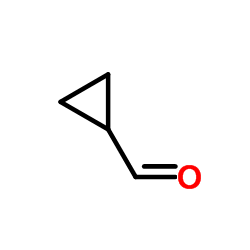
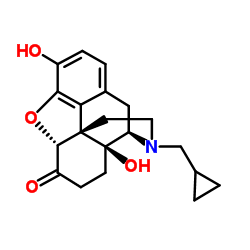
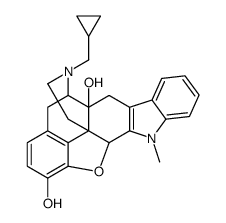 CAS#:111555-57-8
CAS#:111555-57-8 CAS#:111555-58-9
CAS#:111555-58-9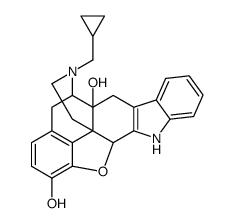 CAS#:111555-53-4
CAS#:111555-53-4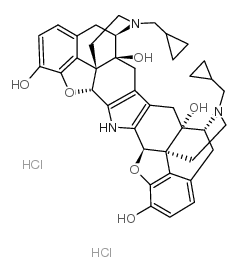 CAS#:105618-26-6
CAS#:105618-26-6 CAS#:111469-81-9
CAS#:111469-81-9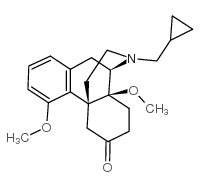 CAS#:118111-54-9
CAS#:118111-54-9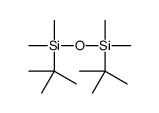 CAS#:67875-55-2
CAS#:67875-55-2 CAS#:79798-39-3
CAS#:79798-39-3